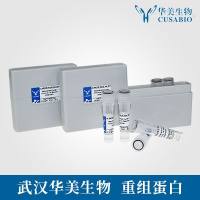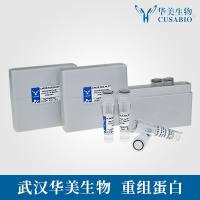Modification of the 5′ Terminus of Oligodeoxyribonucleotides for Conjugation with Ligands
互联网
- Abstract
- Table of Contents
- Materials
- Figures
- Literature Cited
Abstract
Ligands can be introduced at the 5? terminus of an oligonucleotide by adding a linker to the ligand and modifying the 5? terminus of the oligonucleotide. These are then reacted to give the ligand?oligonucleotide conjugate. This unit describes the addition of carboxylated and aminoalkylated linkers, and phosphorothioate, phosphate, and masked thiol groups to the 5? terminus of an oligonucleotide. The addition of linkers to ligands and the final reaction that produces the ligand?conjugated oligonucleotide are described elsewhere in the series. This approach is particularly useful when there is a limited amount of ligand available, when the ligand is sensitive to chemical conditions required for oligonucleotide deprotection, or when the ligand is weakly soluble in solvents required for phosphoramidite? or H?phosphonate?mediated oligonucleotide synthesis.
Table of Contents
- Basic Protocol 1: Addition of a Carboxylated or Aminoalkylated Linker to the 5′ End of Oligodeoxyribonucleotides
- Basic Protocol 2: Addition of a Phosphorothioate or Phosphate Group to the 5′ Terminus of Oligodeoxyribonucleotides
- Basic Protocol 3: Addition of a Masked Thiol Group to the 5′ Terminus of Oligodeoxyribonucleotides Using an S‐Diphenylphosphinate Phosphoramidite
- Alternate Protocol 1: Addition of a Masked Thiol Group to the 5′ Terminus of Oligodeoxyribonucleotides Using an S‐Acetyl Phosphoramidite
- Alternate Protocol 2: Addition of a Masked Thiol Group to the 5′ Terminus of Oligodeoxyribonucleotides Using a Disulfide Phosphoramidite Derivative
- Commentary
- Literature Cited
- Figures
Materials
Basic Protocol 1: Addition of a Carboxylated or Aminoalkylated Linker to the 5′ End of Oligodeoxyribonucleotides
Materials
Basic Protocol 2: Addition of a Phosphorothioate or Phosphate Group to the 5′ Terminus of Oligodeoxyribonucleotides
Materials
Basic Protocol 3: Addition of a Masked Thiol Group to the 5′ Terminus of Oligodeoxyribonucleotides Using an S‐Diphenylphosphinate Phosphoramidite
Materials
Alternate Protocol 1: Addition of a Masked Thiol Group to the 5′ Terminus of Oligodeoxyribonucleotides Using an S‐Acetyl Phosphoramidite
Alternate Protocol 2: Addition of a Masked Thiol Group to the 5′ Terminus of Oligodeoxyribonucleotides Using a Disulfide Phosphoramidite Derivative
|
Figures
-

Figure 4.9.1 Addition of a carboxyl or amino function to the 5′ end of an oligodeoxyribonucleotide. B, adenine, cytosine, guanine, or thymine; B′, thymine or any N ‐protected nucleobase; DBU, 1,8‐diazabicyclo[5.4.0]undec‐7‐ene; P, ontrolled‐pore glass. View Image -

Figure 4.9.2 Ion‐exchange chromatography analysis on a Mono Q column of crude HOOC(CH2 )4 ‐NH‐CO‐d[CTCTCGCACCCATCTCTC] (see ) on a Mono Q column. View Image -

Figure 4.9.3 RP‐HPLC analysis on a Delta Pak C4 column of a purified mixture of HOOC(CH2 )5 ‐NH‐CO‐d[CTCTCGCACCCATCTCTC] and d[CTCTCGCACCCATCTCTC] (see ). View Image -

Figure 4.9.4 Ion‐exchange chromatography on a DEAE column of crude H2 N‐(CH2 )5 ‐NH‐CO‐d[CCGCTTAATACTGA] (see ). View Image -

Figure 4.9.5 RP‐HPLC on a Delta Pak C4 column of a purified mixture of H2 N‐(CH2 )6 ‐NH‐CO‐d[CCGCTTAATACTGA] and d[CCGCTTAATACTGA] (see ). View Image -

Figure 4.9.6 PAGE analysis of d[CCGCTTAATACTGA] (lane 1), H2 N‐(CH2 )5 ‐NH‐CO‐d[CCGCTTAATACTGA] (lane 2), and H2 N‐(CH2 )6 ‐NH‐CO‐d[CCGCTTAATACTGA] (lane 3; see ). View Image -

Figure 4.9.7 Addition of a phosphorothioate or phosphate group to the 5′ end of an oligodeoxyribonucleotide. View Image -

Figure 4.9.8 Ion‐exchange chromatography on a DEAE column of crude sp‐d[CCGCTTAATACTGA] (see ). View Image -

Figure 4.9.9 Ion‐exchange chromatography on a DEAE column of crude p‐d[TTCTCCCCCGCTTA] (see ). View Image -

Figure 4.9.10 RP‐HPLC on a Delta Pak C4 column of a purified mixture of p‐d[TTCTCCCCCGCTTA] and d[TTCTCCCCCGCTTA] (see ). View Image -

Figure 4.9.11 Addition of a masked thiol group to the 5′ end of an oligodeoxyribonucleotide. DTT, dithiothreitol; L, CH2 CH2 OCH2 CH2 OCH2 CH2 ; PySSPy, 2,2′‐dipyridyldisulfide; TCEP, tris(2‐carboxyethyl)phosphine hydrochloride. View Image -

Figure 4.9.12 Preparation of the S ‐diphenylphosphinate phosphoramidite derivative S.7a . DIPEA, diisopropylethylamine; L, CH2 CH2 OCH2 CH2 OCH2 CH2 . View Image -

Figure 4.9.13 Ion‐exchange chromatography on a DEAE column of crude C5 H5 N‐S‐S‐CH2 CH2 ‐(OCH2 CH2 )2 ‐p‐d[CTCTCGCACCCATCTCTC] (see ). View Image -

Figure 4.9.14 RP‐HPLC on a Lichrospher RP 18 column of crude C5 H5 N‐S‐S‐CH2 CH2 ‐(OCH2 CH2 )2 ‐p‐d[CTCTCGCACCCATCTCTC] (see ). View Image -

Figure 4.9.15 Absorption spectra of a solution of C5 H5 N‐S‐S‐CH2 CH2 ‐(OCH2 CH2 )2 ‐p‐d[CTCTCGCACCCATCTCTC] before (broken line) and after (solid line) reduction of the disulfide bridge (see ). View Image -

Figure 4.9.16 Preparation of the S ‐acetyl phosphoramidite derivative S.8a . DIPEA, diisopropylethylamine; L, CH2 CH2 OCH2 CH2 OCH2 CH2 . View Image -

Figure 4.9.17 Preparation of the tritylated disulfide phosphoramidite derivative S.9a . DIPEA, diisopropylethylamine; DMTr, 4,4′‐dimethoxytrityl; L, CH2 CH2 OCH2 CH2 OCH2 CH2 . View Image -

Figure 4.9.18 Ion‐exchange chromatography on a DEAE column of crude DMTrO‐CH2 CH2 ‐(OCH2 CH2 )2 ‐S‐S‐CH2 CH2 ‐(OCH2 CH2 )2 ‐p‐d[CTCTCGCACCCATCTCTC] (see ). View Image -

Figure 4.9.19 RP‐HPLC on a Lichrospher RP 18 column of crude DMTrO‐CH2 CH2 ‐(OCH2 CH2 )2 ‐S‐S‐CH2 CH2 ‐(OCH2 CH2 )2 ‐p‐dCTCTCGCACCCATCTCTC] (see ). View Image
Videos
Literature Cited
| Literature Cited | |
| Aubert, Y., Bourgerie, S., Meunier, L., Mayer, R., Roche, A.‐C., Monsigny, M., Thuong, N.T., and Asseline, U. 2000. Optimized synthesis of phosphorothioate oligodeoxyribonucleotides substituted with a 5′‐protected thiol function and a 3′‐amino group. Nucleic Acids Res. 28:818‐825. | |
| We would like to express our appreciation to our past and present collaborators for their contribution to the development of varied oligonucleotide families over the past years. The work was supported by Rhône‐Poulenc, Agence Nationale de Recherche contre le SIDA and Bio‐Mérieux. | |
| Bonfils, E. and Thuong, N.T. 1991. Solid‐phase synthesis of 5′‐3′‐bifunctional oligodeoxyribonucleotides bearing a masked thiol group at their 3′‐end. Tetrahedron Lett. 35:3053‐3056. | |
| Burns, J.A., Butler, J.C., Moran, J., and Whitesides, G.M. 1991. Selective reduction of disulfides by tris(2‐carboxyethyl)phosphine. J. Org. Chem. 56:2648‐2650. | |
| Carlsson, J., Drevin, H., and Axen, R. 1978. Protein‐thiolation and reversible protein‐protein conjugation. Biochem. J. 173:723‐737. | |
| Eckstein, F. 1983. Phosphorothioate analogues of nucleotides. Tools for investigation of biochemical processes. Angew. Chem. Int. Ed. Engl. 22:423‐506. | |
| Gottikh, M., Asseline, U., and Thuong, N.T. 1990. Synthesis of oligonucleotides containing a carboxyl group at either their 5′‐end or their 3′‐end and their subsequent derivatization by an intercalating agent. Tetrahedron Lett. 31:6657‐6660. | |
| Grimm, G.N., Boutorine, A.S., and Hélène, C. 2000. Rapid routes of synthesis of oligonucleotide conjugates from non‐protected oligonucleotides and ligands possessing different nucleophilic or electrophilic functional groups. Nucleosides Nucleotides and Nucleic Acids 19:1943‐1965. | |
| Kuijpers, W.H. and Van Boeckel, C.A. 1993. A new strategy for the solid‐phase synthesis of 5′‐thiolated oligodeoxyribonucleotides. Tetrahedron 49:10944‐10944. | |
| Kurfürst, R., Roig, V., Chassignol, M., Asseline, U., and Thuong, N.T. 1993. Oligo‐α‐deoxyribonucleotides with a modified nucleic acid base and covalently linked to reactive agent. Tetrahedron 32:6975‐6990. | |
| Raynaud, F., Asseline, U., Roig, V., and Thuong, N.T. 1996. Synthesis and characterization of O6 ‐modified deoxyguanosine‐containing oligodeoxyribonucleotides for triple‐helix formation. Tetrahedron 52:2047‐2064. | |
| Thuong, N.T. and Asseline, U. 1991. Oligodeoxyribonucleotides attached to intercalators, photoreactive and cleavage agents. In Oligodeoxyribonucleotides and Analogues: A Practical Approach (F. Eckstein, ed.) pp. 283‐308. IRL Press, Oxford. | |
| Wachter, L., Jablonski, J.A., and Ramachandran, K.L. 1986. A simple and efficient procedure for the synthesis of 5′‐aminoalkyl oligonucleotides. Nucleic Acids Res. 14:7985‐7994. |







